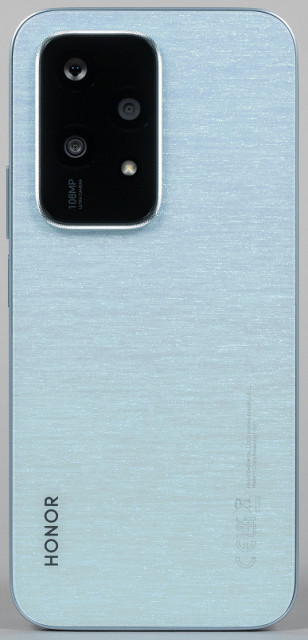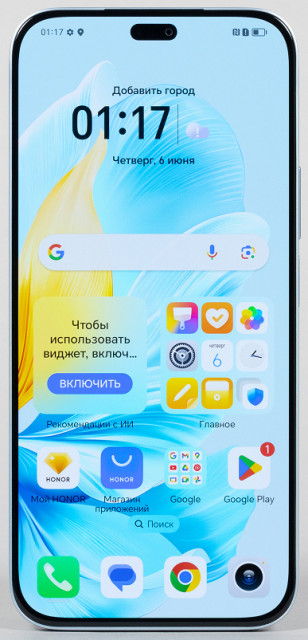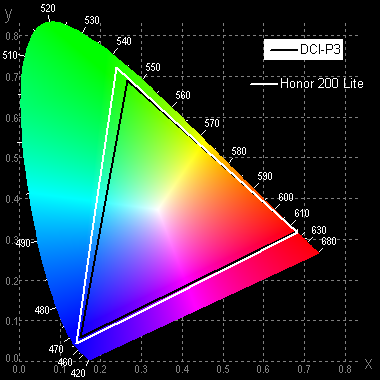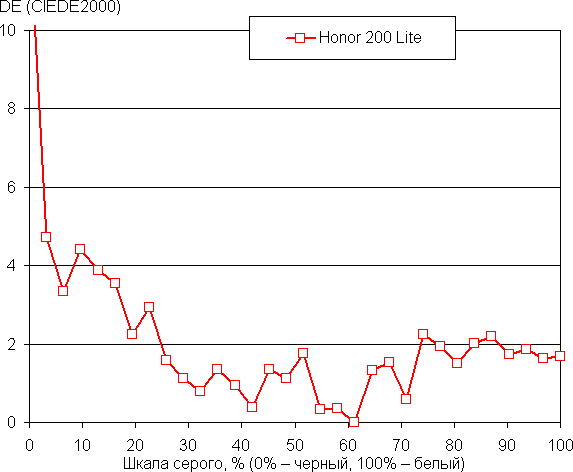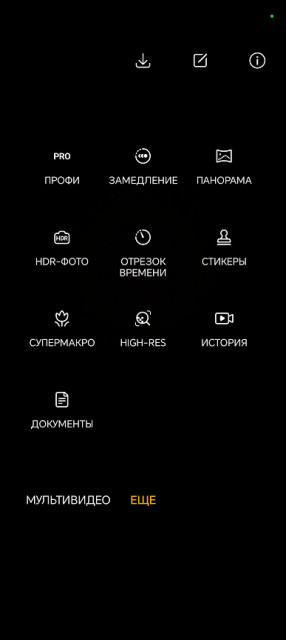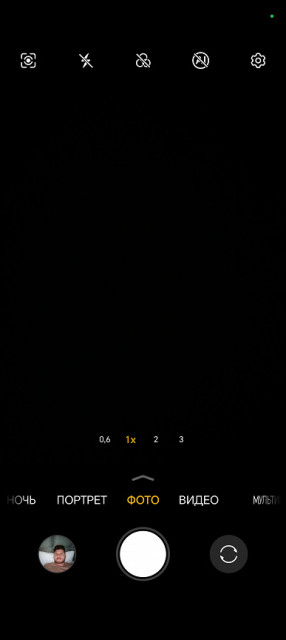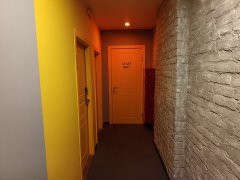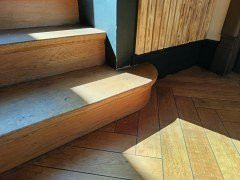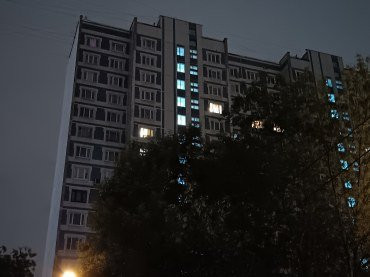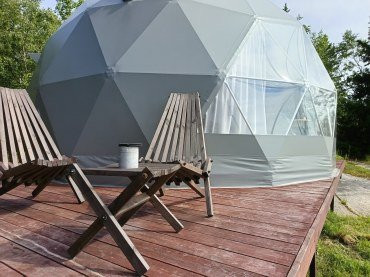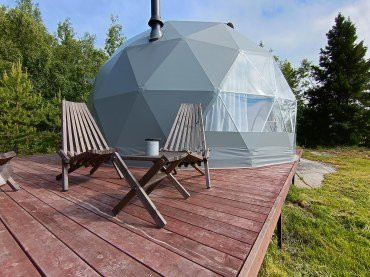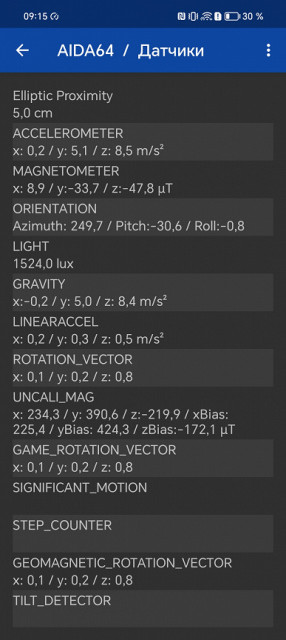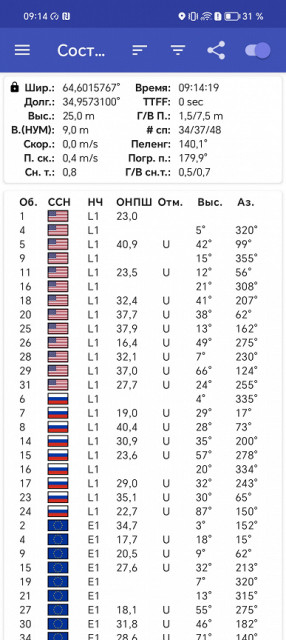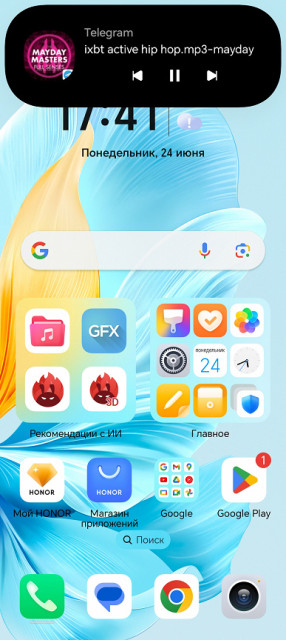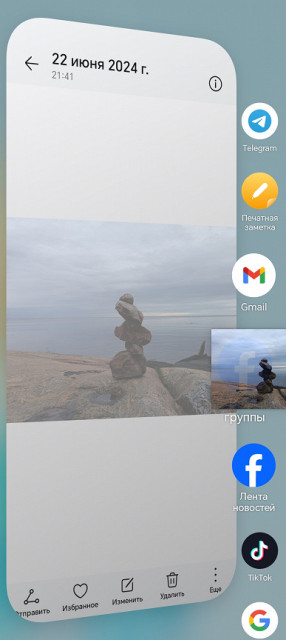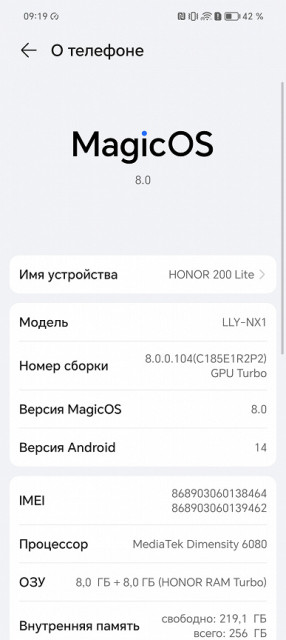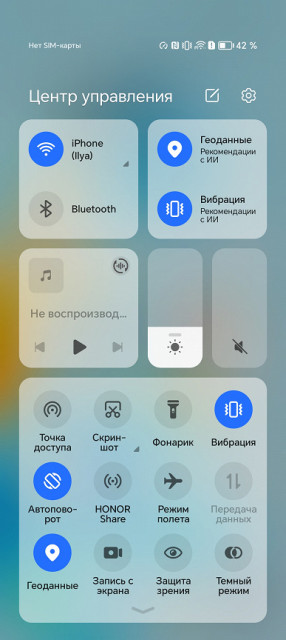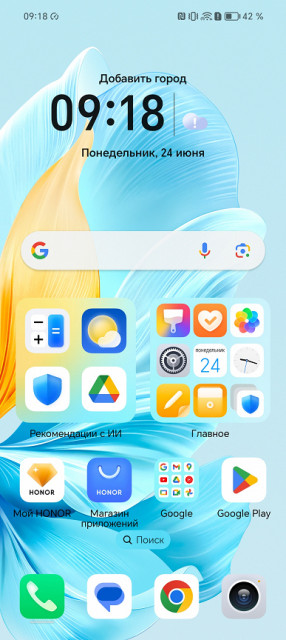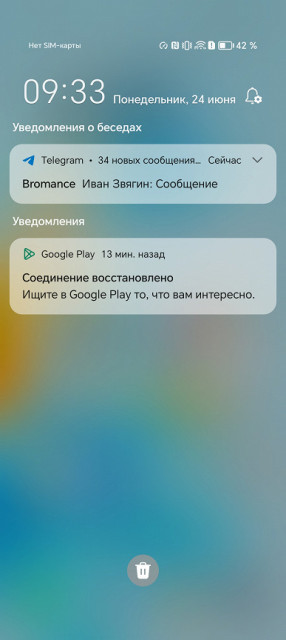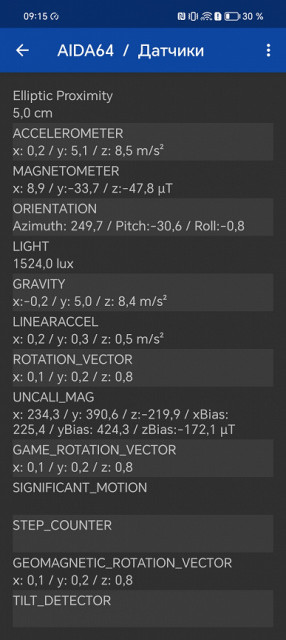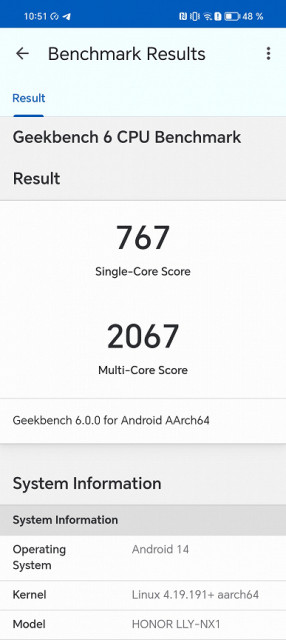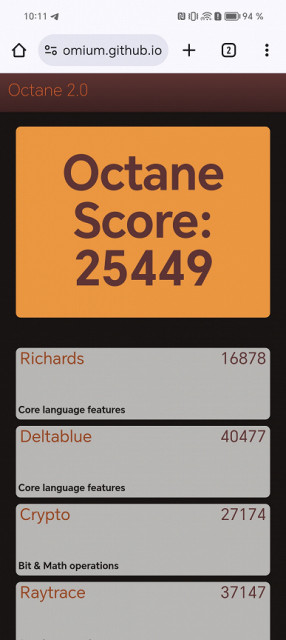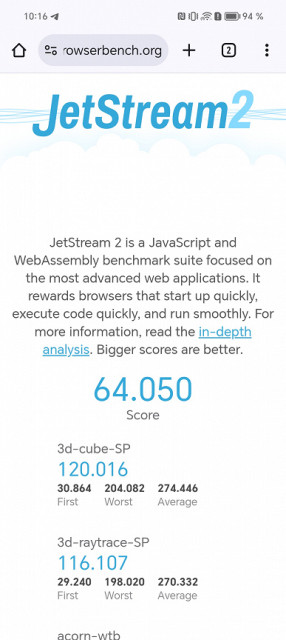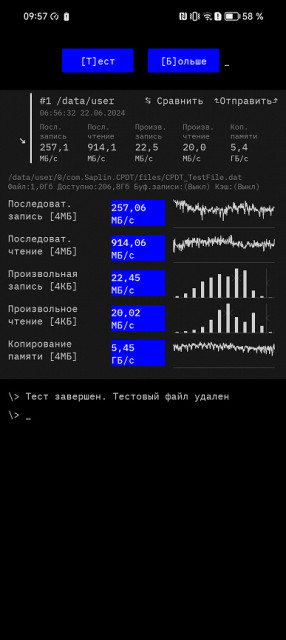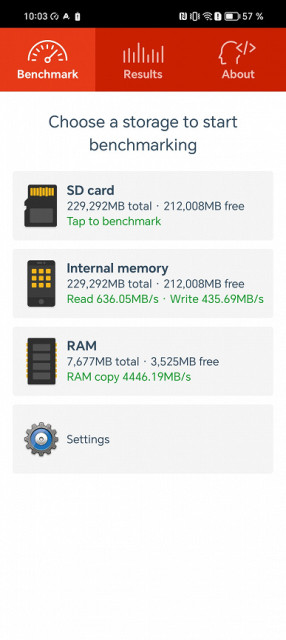Smartphones from the Honor “200th” line are presented for the first time with the Honor 200 Lite model. It’s difficult to call it budget, given the cost of about $375. The device promises a thin body, a large screen and a 50 megapixel front camera. Honor 200 Lite is very similar to the Honor X8b, but uses a different platform. Perhaps we will find other differences in the details?

Main characteristics of Honor 200 Lite
- SoC MediaTek Dimensity 6080, 8 processor cores (2×Cortex-A76 @2.4 GHz + 6×Cortex-A55 @2.0 GHz)
GPU Mali-G57 MP2 - Operating system Android 14, MagicOS 8.0
- Touch display AMOLED, 6.7″, 1080×2412, 90 Hz, 394 ppi
- RAM 8 GB, internal memory 256 GB
- No microSD support
- Nano-SIM support (2 pcs.)
- Networks 2G GSM, 3G WCDMA, 4G LTE, 5G
- GPS, Glonass, Galileo, BDS
- Wi-Fi 5 (2.4/5 GHz)
- Bluetooth 5.1, A2DP, LE
- NFC
- USB 2.0 Type-C, USB OTG
- There is no 3.5mm audio output for headphones
- Cameras 108 MP + 5 MP (wide-angle) + 2 MP, video 1080p@30 fps
- Front camera 50 MP
- Proximity and lighting sensors, magnetic field, accelerometer
- Fingerprint scanner (side-mounted)
- Battery 4500 mAh, charging 35 W
- Dimensions 161×75×6.8 mm
- Weight 166 g
Appearance and ease of use
The smartphone comes with a charger with a maximum output power of 35.2 W and a connecting cable.
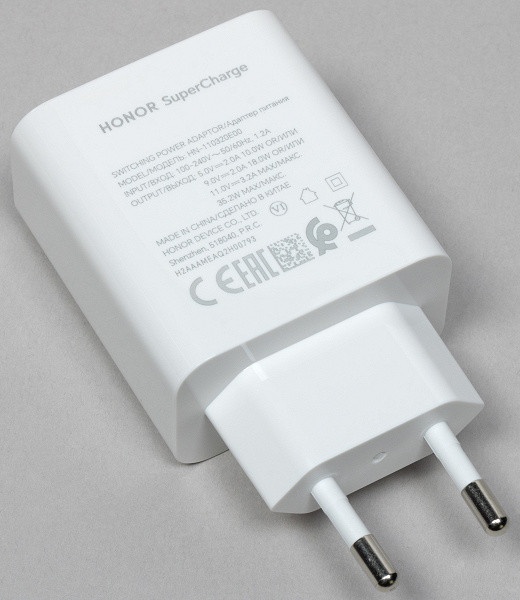
The Honor 200 Lite smartphone, like many simplified models in this line, has a flat screen and edges, which is likely intended to emphasize its status as a non-flagship model and improve usability. The glass is slightly curved at the edges of the screen, making it easier to perform edge-to-center gestures.
The back panel is made of plastic with a texture that imitates a mineral cut, which gives the device an original look. Also available with a matte finish. The side frame is made of matte plastic that matches the color of the back panel.

It is very comfortable to hold the smartphone in your hands thanks to the flat sides. The device weighs 166 g — not so little, but the device feels empty.
The cameras on the back of the smartphone are combined into a rectangular protruding black block. The smartphone did not come with a case, which makes the device unstable when used on a flat surface.

The side keys are located on the right; they are large and comfortable, easy to touch. The built-in fingerprint scanner is integrated into the flat area of the power and lock buttons, it works quickly and without errors.
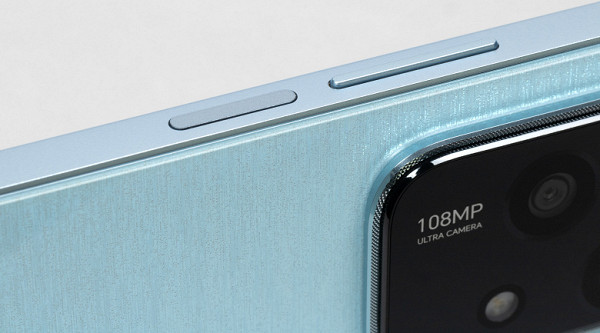
The front camera is single, despite the fact that the cutout in the screen matrix looks like a double one. The second element is not actually a wide-angle camera or an infrared emitter, but just a flash or selfie light. There is a slot above the camera, behind which there is a speaker.

The card tray is double, it can accommodate two Nano-SIM cards. There is no slot for a microSD memory card.
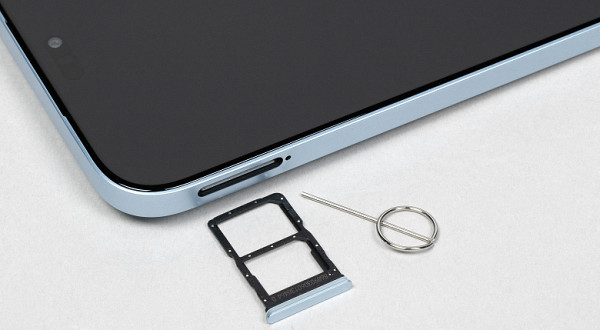
The main speaker, microphone and USB Type-C connector are installed at the bottom. But there is no 3.5 mm audio output for wired headphones.

At the top end there is only a hole for an additional microphone (used for noise reduction).

The Honor 200 Lite smartphone is not equipped with full protection against moisture and dust, which distinguishes it from models in the Magic line. There are currently three color options available: Midnight Black, Ocean Blue, and Shimmer Blue. Depending on the color chosen, there is a slight difference in the texture of the back panel.
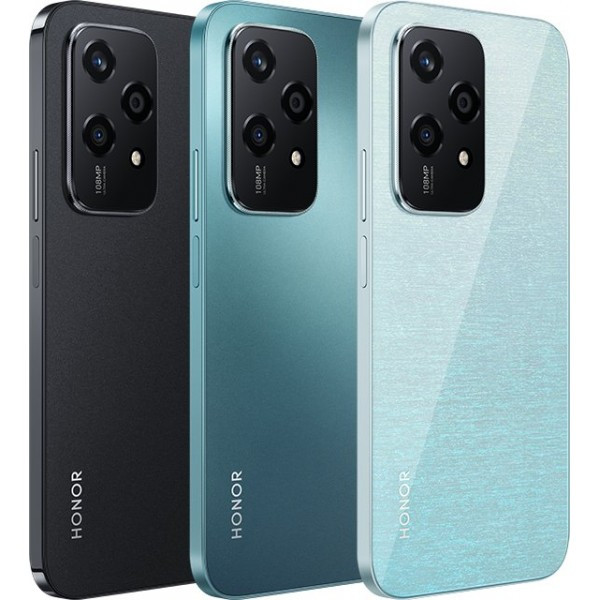
Screen
The Honor 200 Lite smartphone is equipped with a 6.7-inch AMOLED display with a resolution of 1080x2412 (20:9), which has a flat protective glass. The pixel density is 394 ppi, and the screen supports a 90 Hz refresh rate.
The front surface of the screen is made of a glass plate with a mirror-smooth surface that is protected from scratches. The anti-glare properties of the screen are better than the screen of Google Nexus 7 (2013). There is an oleophobic coating on the outer surface, which significantly improves fingerprint resistance.
When displaying a white field across the entire screen and manually controlling the brightness, the maximum value was 580 cd/m² in standard lighting conditions, and in very bright light it can reach up to 1100 cd/m². This indicates high screen brightness, which, depending on the area of the white areas, may be even higher than the specified values. The screen provides good readability in the sun thanks to its excellent anti-glare properties. The minimum brightness value is 2 cd/m², which allows you to use the device even in complete darkness without discomfort.
The automatic brightness adjustment function is carried out using a light sensor located next to the front camera. It responds adequately to changes in lighting, allowing the user to adjust the brightness to suit current conditions. Brightness settings automatically adapt to the environment: in complete darkness the brightness is automatically reduced to 4 cd/m², in office environments with artificial lighting it is maintained at 150 cd/m², and in very bright environments it reaches up to 1100 cd/m².
At high and medium brightness levels, modulation with a frequency of 60 or 90 Hz is observed.
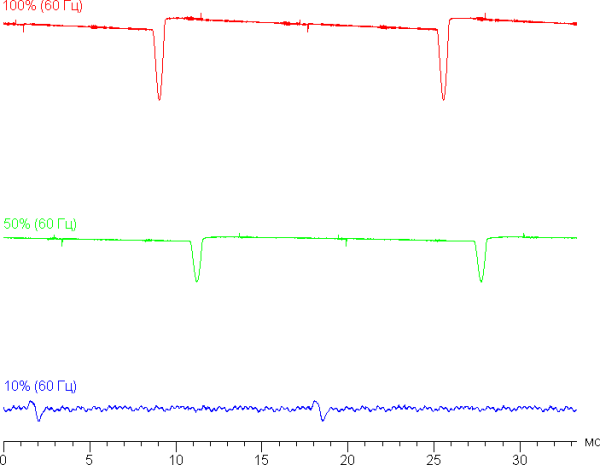
At high and medium brightness levels, the modulation frequency is 60 Hz and the modulation duty cycle is low, eliminating visible flicker. When the brightness is significantly reduced, there is modulation at a high frequency (3.24 kHz), but this also does not lead to visible flicker. When measuring brightness at 10% in a narrow area of the screen perpendicular to the long side, high frequency modulation becomes more noticeable.
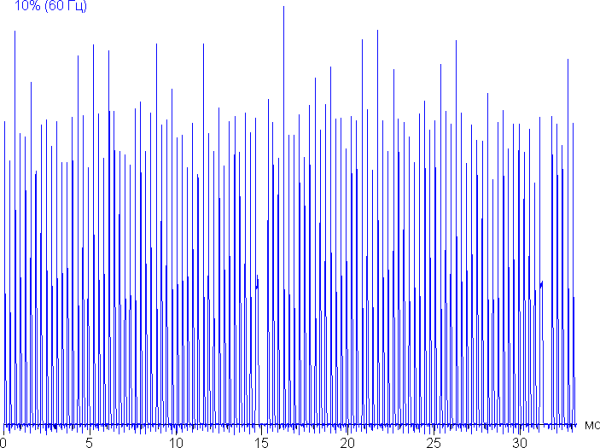
This is because in normal measurements the sensor covers an area of approximately 8 mm in diameter, which contains various zones with modulation phases that may vary. This is why high-frequency modulation can remain invisible in conventional measurements.
In the screen settings, you can activate a mode with an increased refresh rate of up to 90 Hz.
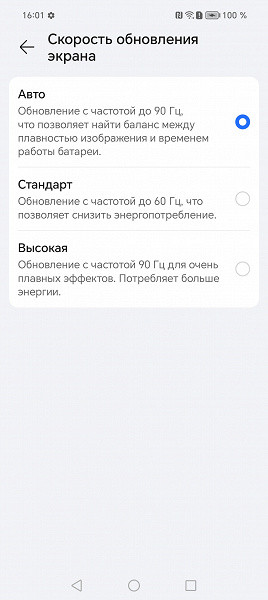
In this mode, the smoothness of scrolling (lists in menus, etc.) increases. Let's see if this changes the nature of the modulation:

The AMOLED screen uses an active matrix of organic light-emitting diodes. The image is formed using subpixels of three primary colors — red ®, green (G) and blue (B). However, the number of red and blue subpixels is half that of green, which corresponds to the RGBG layout. This is confirmed by a fragment of a microphotograph.
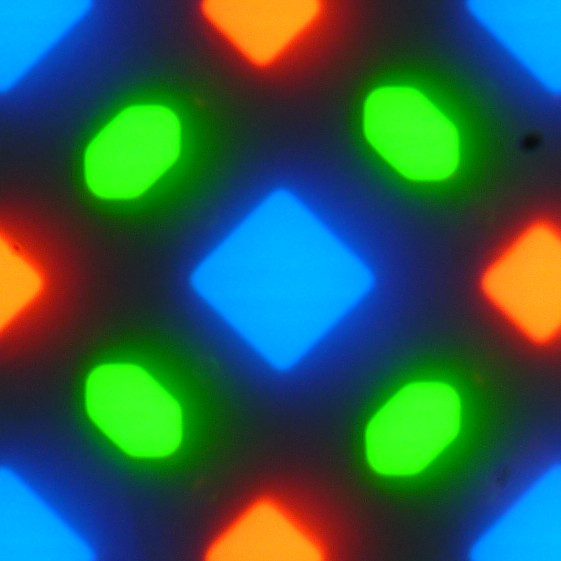
Yukarıdaki parçada 4 yeşil alt piksel, 2 kırmızı (4 yarım) ve 2 mavi (1 tam ve 4 çeyrek) görebilirsiniz. Bu parçalar, ekranın tamamını boşluk veya çakışma olmadan kaplayacak şekilde tekrarlanabilir. Bu tür matrisler için Samsung, PenTile RGBG terimini kullanıyor. Ekran çözünürlüğü üreticisi bunu yeşil alt piksellere göre hesaplıyor ve bu da diğer renkler için çözünürlükte düşüşe yol açıyor. Bazı bozulmalara ve eşit olmayan kontrast sınırlarına rağmen, yüksek ekran çözünürlüğü bunların görüntü kalitesi üzerindeki etkisini en aza indirir.
Ekranın mükemmel görüş açıları var. Belirli bir açıdan bakıldığında parlaklıktaki düşüş, Nexus 7 gibi LCD teknolojisini kullanan ekranlarla karşılaştırıldığında önemli ölçüde daha azdır. Aynı resmi parlaklıkta bile akıllı telefon ekranı, özellikle düşük izleme açılarında görsel olarak daha parlak görünür. Bir akıllı telefon ekranında, beyaz renk, belirli bir açıdan bakıldığında hafif mavimsi bir ton alabilir ancak siyah renk, hiçbir değişiklik olmadan zengin ve derin kalır. Bu, yüksek seviyede kontrast sağlar.
Karşılaştırma için burada bir akıllı telefonun ve başka bir cihazın ekranlarında aynı görsellerin yer aldığı fotoğraflar var. Ekranların parlaklığı yaklaşık 200 cd/m², renk dengesi ise 6500 K olarak ayarlandı.
Beyaz alanlı bir örnek (Normal Renkler profili) aşağıda görülebilir:
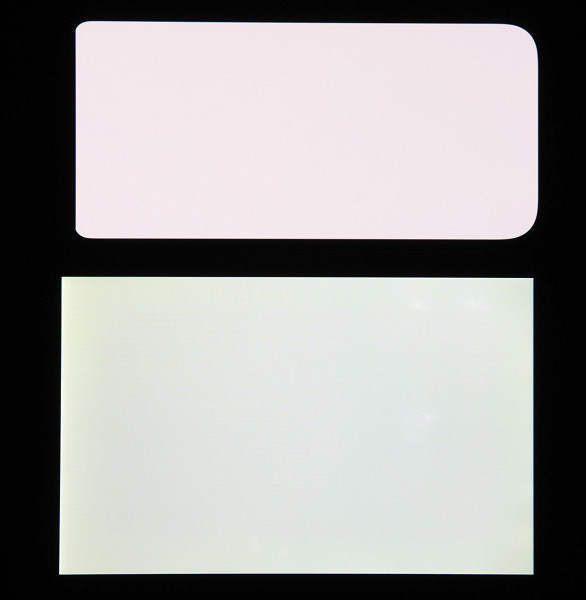
Note the good uniformity of brightness and color tone of the white field.
And a test picture (profile Normal [colors]):

Color reproduction on the screen is good, colors are moderately saturated, with slight differences in color balance between screens. It is important to note that photographs cannot accurately convey color quality and are used for illustrative purposes only. For example, the pronounced reddish tint of white and gray fields in photographs of smartphone screens may be less noticeable when viewed directly, as confirmed by spectrophotometric tests. This is explained by the difference in the spectral sensitivity of the camera matrix and human vision.
The photo above was taken using the active “Normal Colors” profile in the screen settings, there are only two available:
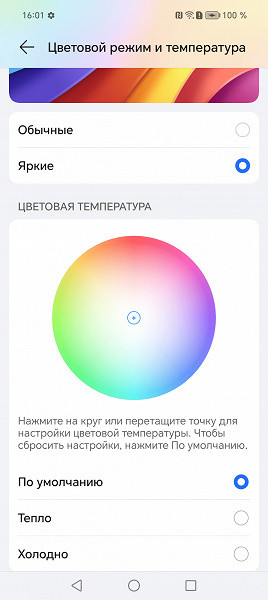
The Vivid [colors] profile (selected by default) has color balance and increased color saturation:

Switching the state of the matrix elements occurs almost instantly, however, when turned on, a step with a width of about 17 ms (at a screen refresh rate of about 60 Hz) or approximately 11 ms (at a frequency of 90 Hz) can be observed. For example, the graph below shows the dependence of brightness on time during the transition from black to white:
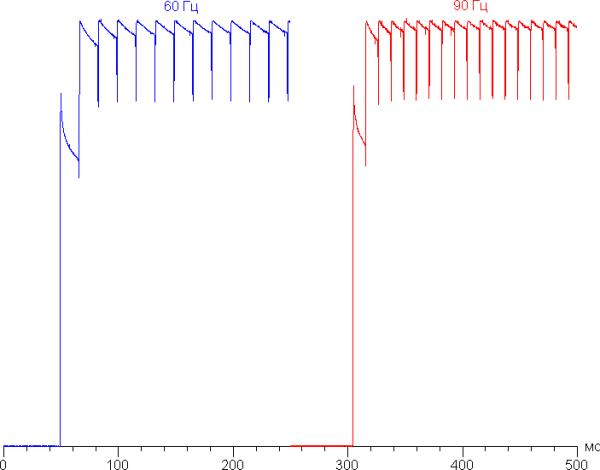
Under some conditions, the presence of such a step can cause “trail” effects that remain behind moving objects.
An analysis performed on 32 points with equal intervals according to the numerical value of the shade of gray showed that the gamma curve does not have a significant slope in either light or dark areas. The value of the exponent of the approximating power function was 2.20, which is close to the standard value of 2.2. However, the actual gamma curve deviates slightly from the ideal power law:

Let us recall that OLED screens are characterized by a dynamic change in the brightness of image fragments depending on the nature of the displayed content — it is slightly reduced for overall bright images. Because of this, the resulting dependence of brightness on hue (gamma curve) most likely differs from the gamma curve of a static image, since the measurements were made with sequential output of shades of gray over almost the entire surface of the screen.
The color gamut in Vivid mode is very wide, exceeding DCI-P3, while in Normal mode it is close to sRGB:
Without correction (the Bright option), the spectra of the components (that is, the spectra of pure red, green and blue colors) are very well separated:
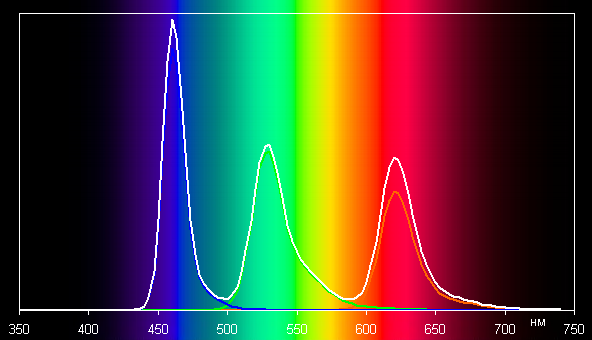
In the case of a profile, the usual color components are mixed with each other to a large extent:
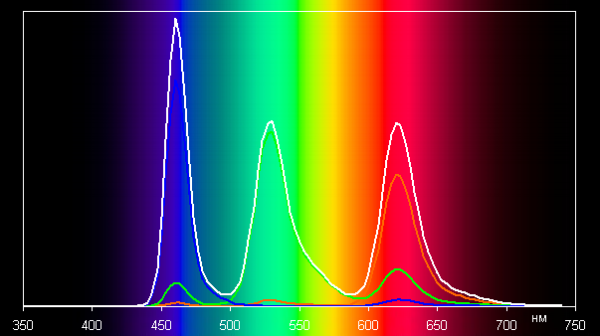
Note that on screens with a wide color gamut (without appropriate correction), regular images optimized for sRGB devices appear unnaturally saturated. Therefore, it is recommended in most cases to use the «Regular» profile for viewing movies, photos and natural scenes.
This device allows you to adjust the color balance by selecting a color temperature profile or adjusting the hue on the color wheel. In the «Normal» mode, the balance of shades on the gray scale is good even without correction, since the color temperature is close to the standard 6500 K, and the deviation from the blackbody spectrum (ΔE) is less than 3 units, which is a good indicator. At the same time, color temperature and ΔE change slightly from hue to hue, which has a positive effect on the visual assessment of color balance.
Of course, there is a function to reduce the intensity of the blue component:

In principle, bright light can disrupt the daily (circadian) rhythm, but this problem can be solved by reducing the brightness to a comfortable level, which remains sufficient. Changing the color balance by reducing the contribution of blue does not make sense.
This unit does not appear to support DisplayPort Alt Mode for USB Type-C, which means there is no way to output image or audio to an external device via the USB port.
To summarize, the screen has a very high maximum brightness (1100 cd/m²) and excellent anti-glare properties, which allows you to use the device even outdoors on a bright sunny day without any problems. In complete darkness, the brightness can be reduced to a comfortable level (up to 2 cd/m²). The automatic brightness adjustment mode works adequately. Among the advantages of the screen, it is worth highlighting an effective oleophobic coating, the absence of visible flicker, support for a high refresh rate mode (90 Hz), as well as a color gamut close to sRGB and good color balance (if you select the appropriate profile). Also worth noting are the advantages of OLED screens, such as true blacks (in the absence of reflections) and less brightness drop when viewed from an angle, compared to LCD screens. In general, the quality of the screen is very high.
Camera
Honor 200 Lite received three rear cameras: the main one, an ultra-wide-angle one and a module for macro photography.
- 108 MP, 1/1.67″, f/1.8, PDAF (main)
- 5 MP, f/2.2 (ultrawide)
- 2 MP, f/2.4 (macro)
Apparently, in this respect the new model completely repeats the Honor X8b, released in Russia in February of this year.
The camera sensors are not officially named, but the main module is likely equipped with Samsung Isocell HM6. The camera has fast phase detection autofocus, but lacks optical stabilizer. There are shooting modes with pixel binning and full resolution. The 108-megapixel sensor mode offers a boost in detail, but photos in this mode may not always have enough contrast when viewed at full size, and detail is often too high for typical smartphone photography needs.
In the main mode, the camera does not impress with detail and sharpness, this is especially noticeable closer to the edges of the frame. However, the three-dimensionality of the image is well expressed, the dynamic range is sufficient, although overexposure may be observed when shooting the sunset. Sometimes the camera may not reproduce the colors correctly, for example, the rocks in the last photo turned out to be colored purple, although in reality they were not. At the same time, the smartphone successfully copes with situations where there is a bright strip of light against the background of a dark room, without requiring additional activation of HDR.
At night, detail decreases even more, and visible noise appears in the images. The smartphone comes with a separate night mode, which is important to use for best results (however, this requires holding the smartphone still for a few seconds).
The Honor 200 Lite model does not have a module with a telephoto lens, so zooming is carried out exclusively digitally. The camera interface has buttons for 2x and 3x zoom, and the maximum magnification is 10x (in Honor X8b it was 8x), but it is not recommended to use it for artistic purposes.
The wide-angle module with a 5-megapixel sensor does its job well: the image has fewer details, but it is not faded or dark, and has enough contrast. There are blurs at the edges of the image, which is inevitable. However, at night, even with white night photography, the wide-angle lens becomes almost useless.
The third module for macro photography with a 2-megapixel sensor does not offer anything interesting, despite the impressive stated minimum focusing distance of 4 cm.
The front camera is single, but offers a choice of two “focal lengths”. And obviously the larger portrait is just a crop of the central part of the frame. There are not enough details in the textures, although the portrait itself turns out quite well.
The smartphone can record video with a maximum resolution of 1920x1080 at 30 frames per second without stabilization. The image may be a little soft in detail, but sharpness and clarity are not an issue. Color reproduction is natural, white balance is well maintained. The sound is recorded in high quality.
Telephone and communications
The Honor 200 Lite smartphone supports mobile networks up to 5G, but does not support eSIM. In the urban area of the Moscow region, the device demonstrates reliable operation in wireless networks, without losing connection and quickly restoring it after a break.
The smartphone also has a wireless adapter supporting Wi-Fi 5 (802.11a/b/g/n/ac, 2.4/5 GHz) and Bluetooth 5.0, and also has NFC support.
The single-channel satellite navigation module works with GPS, Glonass, Galileo and BDS. The first satellites are quickly detected during a cold start, and the positioning accuracy is high.
The voice of the interlocutor through the speaker sounds loud and clear. The vibration motor is ordinary, with average power.
Software and multimedia
Honor 200 Lite runs on Android 14 operating system with MagicOS 8.0 shell. The interface is designed in the old style with rounded corners of elements and active use of translucency. The translation of the texts is done correctly, and although not all Russian words fit on one line, hyphens are now added according to the rules.
New features in MagicOS 8.0 include Magic Portal and Magic Capsule. Magic Portal is a panel that appears on the right side of the screen when you drag any content into it, such as selected text or an image. At the same time, the application interface partially opens, creating the effect of a door opening, which is reflected in the name. Magic Capsule is an interpretation of the Dynamic Island idea, working with applications such as the built-in audio player.
The Honor 200 Lite has few pre-installed and downloadable applications, as well as a complete absence of advertising. The upper curtain is divided into two parts depending on the angle of its retraction. The device has official access to the Google store and its apps, but also offers access to other repositories where you can find apps that are also available in Honor's own store.
Performance
Honor 200 Lite is equipped with an octa-core MediaTek Dimensity 6080 processor and Mali-G57 MP2 graphics. RAM is 8 GB, and thanks to Honor RAM Turbo technology, another 8 GB of virtual memory is available. The built-in storage is 256 GB, but it is not possible to install a memory card due to the lack of a slot. The device supports USB OTG to connect external devices to the USB Type-C port.
The platform was introduced in May 2023 and is manufactured using the 6 nm process technology. It appears to be based on the older Dimensity 810 (August 2021), but with the addition of camera support up to 108 megapixels instead of the original's 64 megapixels. The performance of this platform is below average: in the AnTuTu 9 test, the device scores about 350 thousand points. However, for everyday tasks, performance is sufficient to keep the system running smoothly, although the camera interface can lag at times, especially when switching between sensors. Demanding games on this platform should not be expected.
Testing in complex tests AnTuTu and GeekBench:
To make it easier to analyze the results of testing a smartphone in the latest versions of popular benchmarks, we have collected the data in tables. These tables also include the results of several other devices from different segments that have undergone similar testing on the latest versions of the benchmarks. This helps to visually evaluate the obtained numerical values. However, due to the limitations of a single comparison, it is not possible to present the results of all valid and current models that have been tested on earlier versions of the benchmark programs.
| Honor 200 Lite (Mediatek Dimensity 6080) | Honor X8b (Qualcomm Snapdragon 680) | Poco X5 Pro 5G (Qualcomm Snapdragon 778G) | Tecno Pova 5 Pro (Mediatek Dimensity 6080) | |
|---|---|---|---|---|
| AnTuTu (v9.x) (bigger is better) | 364270 | 288428 | 536193 | 397188 |
| GeekBench 6 (bigger is better) | 767/2067 | 417/1473 | 941/2640 | 759/2053 |
Testing the graphics subsystem in 3DMark and GFXBenchmark gaming tests:
| Honor 200 Lite (Mediatek Dimensity 6080) | Honor X8b (Qualcomm Snapdragon 680) | Poco X5 Pro 5G (Qualcomm Snapdragon 778G) | Tecno Pova 5 Pro (Mediatek Dimensity 6080) | |
|---|---|---|---|---|
| GFXBenchmark Aztec Ruins OpenGL (1080p Offscreen, fps) | 17 | — | — | — |
| GFXBenchmark Aztec Ruins Vulkan (1080p Offscreen, fps) | 15 | — | — | — |
| GFXBenchmark Car Chase ES 3.1 (1080p Offscreen, fps) | 16 | — | — | — |
| GFXBenchmark Manhattan ES 3.1 (1080p Offscreen, fps) | 27 | 15 | 56 | 28 |
| GFXBenchmark T-Rex (1080p Offscreen, fps) | 69 | 41 | 132 | 69 |
Testing in browser cross-platform tests:
| Honor 200 Lite (Mediatek Dimensity 6080) | Honor X8b (Qualcomm Snapdragon 680) | Poco X5 Pro 5G (Qualcomm Snapdragon 778G) | Tecno Pova 5 Pro (Mediatek Dimensity 6080) | |
|---|---|---|---|---|
| Google Octane 2 (bigger is better) | 25449 | 10975 | 27070 | 19194 |
| JetStream (bigger is better) | 64 | 43 | 73 | 50 |
AndroBench memory speed test results:
Heat
We test for performance degradation when heating using the Burnout Benchmark program, which allows you to load the CPU, GPU and NPU:
| Stress on | Heating performance, as a percentage of maximum |
|---|---|
| CPU | 72% |
| GPU | 72% |
| NPU | thirty% |
Battery life
The Honor 200 Lite smartphone is equipped with a 4500 mAh battery. Its autonomy demonstrates high performance, outperforming even competitors with larger batteries.
Testing was carried out at normal power consumption levels without using power saving features, despite the presence of them in the device. The screen brightness was set to the minimum comfortable level (about 100 cd/m²). As part of testing, the following tasks were performed: continuous reading in the Moon+ Reader application using the standard light theme, continuous viewing of HD video (720p) over a home Wi-Fi network, and playing Injustice 2 with automatic graphics settings.
| Battery capacity | Reading mode | Video mode | 3D gaming mode | |
|---|---|---|---|---|
| Honor 200 Lite | 4500 mAh | 25 h 30 min | 24 h 00 m. | 6 h 30 min |
| Honor X8b | 4500 mAh | 23:00 | 20:00 | 8:00 a.m. |
| Realme C67 | 5000 mAh | 23:00 | 21:00 | 7 h 30 min |
| Tecno Spark 20 Pro | 5000 mAh | 17:00 | 14:30 | 7:00 a.m. |
| Tecno Pova 5 Pro | 5000 mAh | 20:00 | 13:30 | 7:00 a.m. |
All these data represent maximum values obtained under «ideal» conditions, including no SIM cards installed. Any changes in usage patterns will likely result in a decrease in these figures.
Using the included mains charger, the smartphone is fully charged in 1 hour 20 minutes, and it takes about half an hour to reach 50% charge. Wireless charging is not supported.
Bottom line
Honor 200 Lite really resembles the Honor X8b model, released at the end of winter. They even match in weight to the nearest gram. The difference between them lies in the platforms: the current model uses a Mediatek chip, which is a third more productive and supports 5G communications. The performance of this device is not very high, and the 108-megapixel camera, despite the large number of megapixels, does not produce any particularly high-quality images. However, the model is definitely attractive thanks to its excellent AMOLED screen, stylish design and outstanding battery life (even better than the X8b).

